|
|
ADDRESS AND INTERACTION WITH THE MEMBERS OF MARUTI UDYOG LIMITED, GURGAON, HARYANA
25-05-2007 : GURGAON, HARYANA
Dynamics of Automobile Industry
Small aim is a crime.
I am indeed delighted to visit the Maruti Udyog plant in Gurgaon and address the members of this unique institution. I greet Shri Jagdish Khattar, Managing Director, Management team, scientists, engineers and managers of Maruti Udyog Limited. I congratulate the Maruti team for pioneering action in introducing the people?s car which has become affordable for the large sections of Indian population today, in spite of stiff competition faced by the entry of many international companies. From the study of Maruti profile, Maruti is now generating a profit of around Rs. 1560 Cr. in the financial year 2006-07. Maruti is presently producing over 6.7 lakh vehicles per annum using a plant which designed to produce 3.5 lakh vehicles annually. I understand, this has been achieved through continuous application of productivity enhancement strategy, particularly relating to dynamic inventory management, continuous implementation of cost reduction system. It is heartening to find that the price of Maruti models have virtually remained unchanged during the period 2001-02 to 2006-07, whereas in some case, the price has actually come down. These are notable development achievement and the nation is thankful to all the members of Maruti team for this singular contribution. With this background, I would like to discuss with you on the topic "Dynamics of Automobile Industry".

Indian Automotive Industry
During the last two decades, Indian Automobile Industry has taken long strides. After 1983, the standards of automotive technology has got redefined and Indian consumers are able to get what their western counterparts are getting. I am also happy to note that many of Indian auto companies have started exporting their components to their original equipment manufacturers in the developed world. In this respect, globalization has done a lot of good in the Indian automobile industry. With the external forces arising out of globalization, our thinking has been refined resulting in enhancing our ability to face global competition through our core strength. In India the vehicle production is increasing at about 17%. While this is a welcome situation from the point of view of personnel and goods mobility, it has two major issues which have to be addressed: ?environmental pollution and safety?. This has to be done innovatively while designing all our future cars.
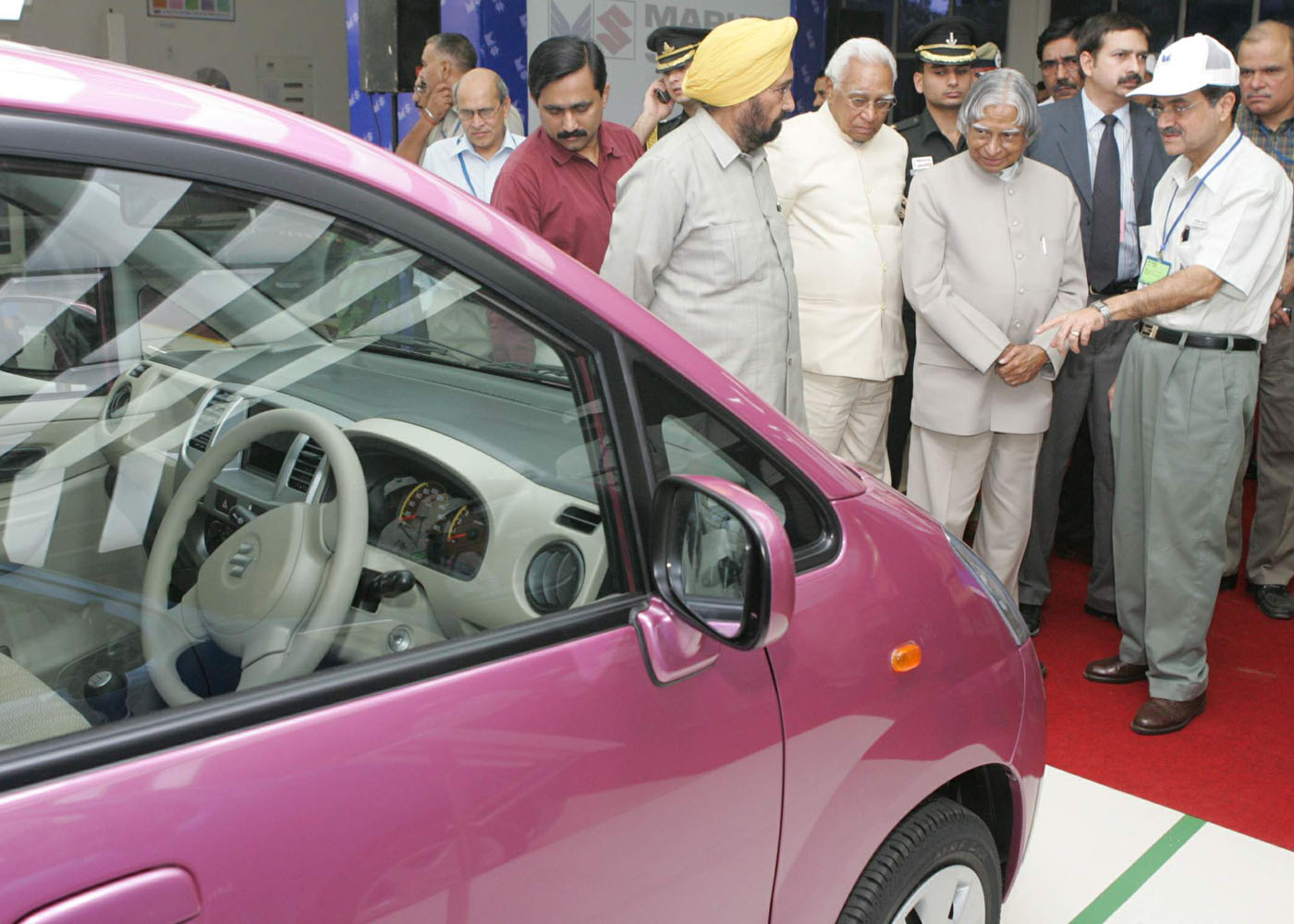

Innovation is the capital
I was studying the Global Competitiveness Report for the year 2006-07. There I find in terms of Growth Competitive Index ranking Switzerland is ranked 1, Singapore is ranked 5, US is ranked 6, Korea 24, UAE 32, India 43 and China 54. I am glad to find that India has moved up in competitiveness to 43. Growth competitiveness is determined by the innovative ability of an organization. This innovation arises from institutional initiative and the R & D productivity of the firm, shaped by policies and nature of local institutions. National innovative capacity has to be the country?s important potential for producing competitive products. I am happy to find that Maruti enjoys the status of Number ?2? in respect of value addition per employee, adding 2,05,000 US dollars per employee. This has been achieved through large scale outsourcing by Maruti with comprehensive quality control system in place. I am sure all of you will be aspiring to reach the top position very soon. This requires the combined effort of researchers, technologists, production engineers, business leaders. I would to suggest to the experts assembled here, to concentrate on the following design criteria for competing in the national and international market:
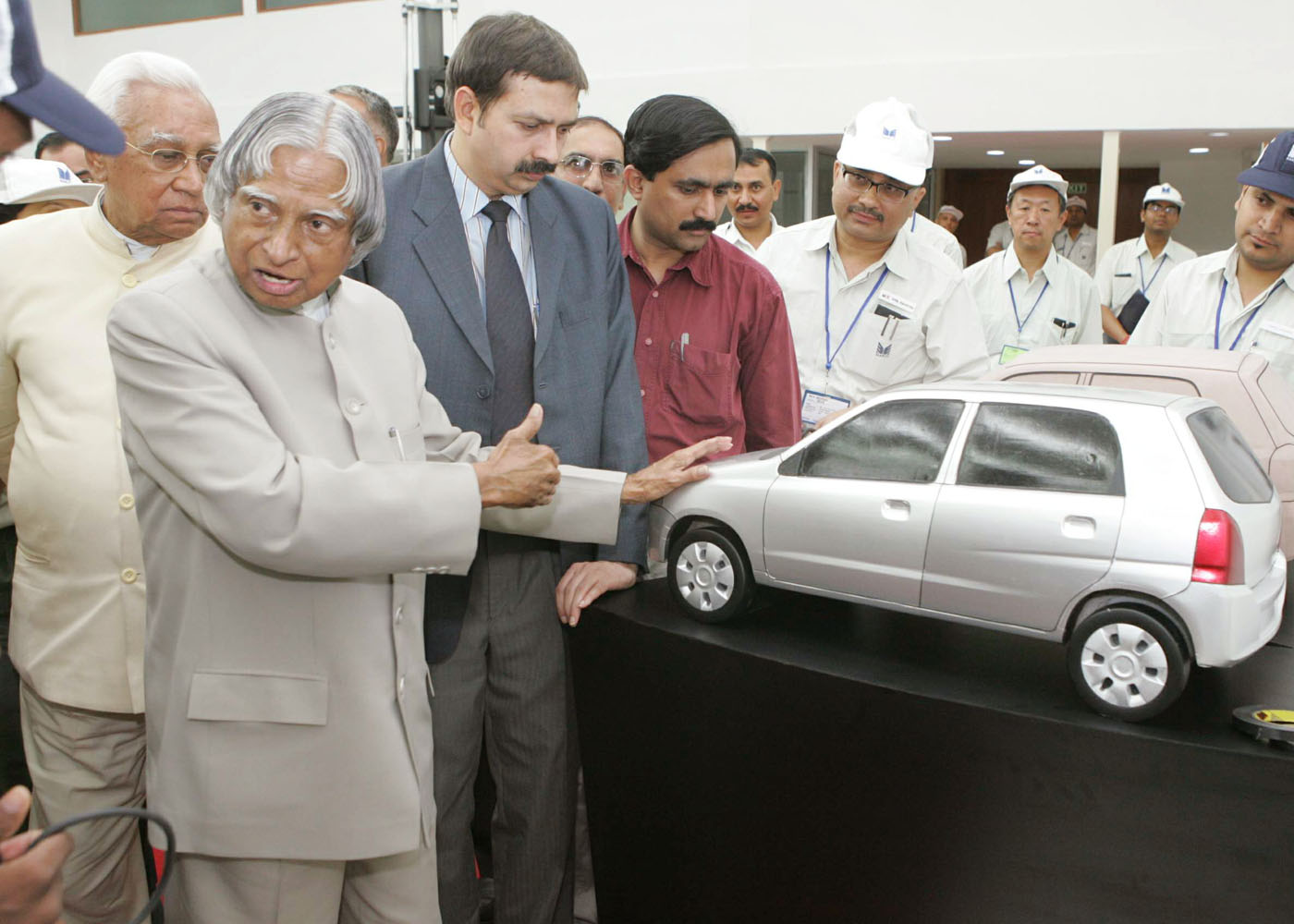
1. Work towards highest fuel efficiency for a given class of engine and car sizing.
2. Continuously decreasing the overall weight of the automobile systems enabling higher payload capability.
3. Designing the power plant to accept 100% bio-fuel.
4. Design to cost and quality
5. Design for providing high-level passenger Safety.
6. Constantly increasing the electronics, communication and control in the automobile systems for realizing high reliability, self-healing and fail-safe system.
I realize that all the six criteria are interconnected. Now, let me discuss some of the research areas where automobile scientists and engineers have to concentrate.
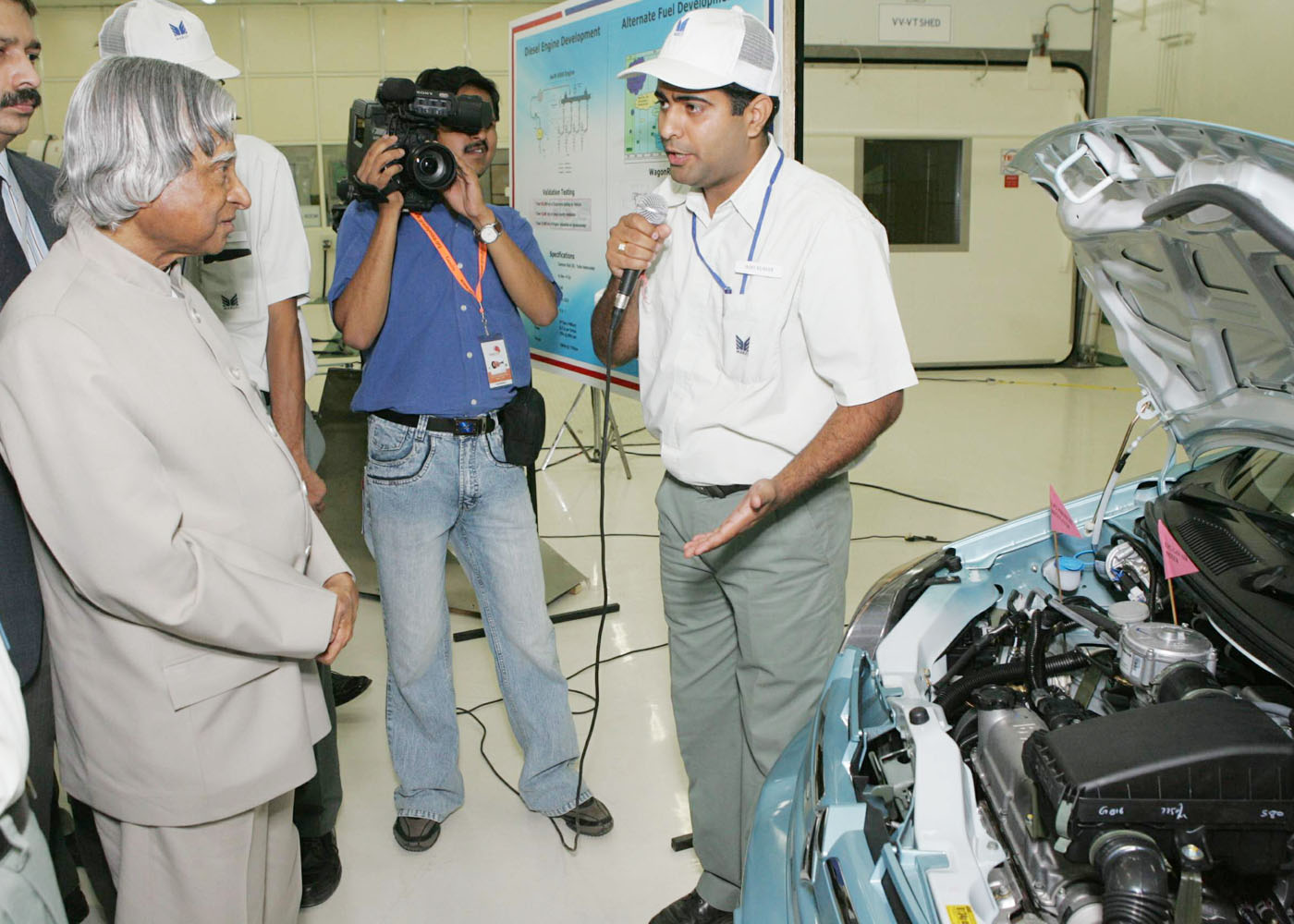

Environmental Pollution
We are aware that there is considerable environmental pollution in cities all over the world and more so in Indian cities. The accepted safe levels of Carbon-di-oxide and particulate matter have crossed many times in our cities.
The world energy forum has focused on what is going to be the status of fossil fuel based material like oil, gas and coal in the next fifty to hundred years. It is estimated by international forecasting that the available resource of fossil material will get exhausted within the next fifty to hundred years since these resources are non-renewable. And also friends, I would also like to share with you about the recent article in the ?New Scientist? which mentions about dumping of 30 billion tonnes of carbon-di-oxide into the atmosphere by all the nations every year. This dumping primarily arises due to the use of fossil fuels which directly affects the ozone layer which is existing between 25 kms to 30 kms above the earth?s surface. As you all know, Ozone layer regulates the sun radiation and cosmic radiation on earth. Earth is experiencing both stratospheric cooling (due to ozone hole) and tropospheric warming (due to increased green house gases). The question is, how do we protect our earth by protecting the atmosphere.
This poses the challenge to automotive researchers and engineers to concentrate on improved combustion engine, alternate fuels, renewable energy sources and alternate power plants.
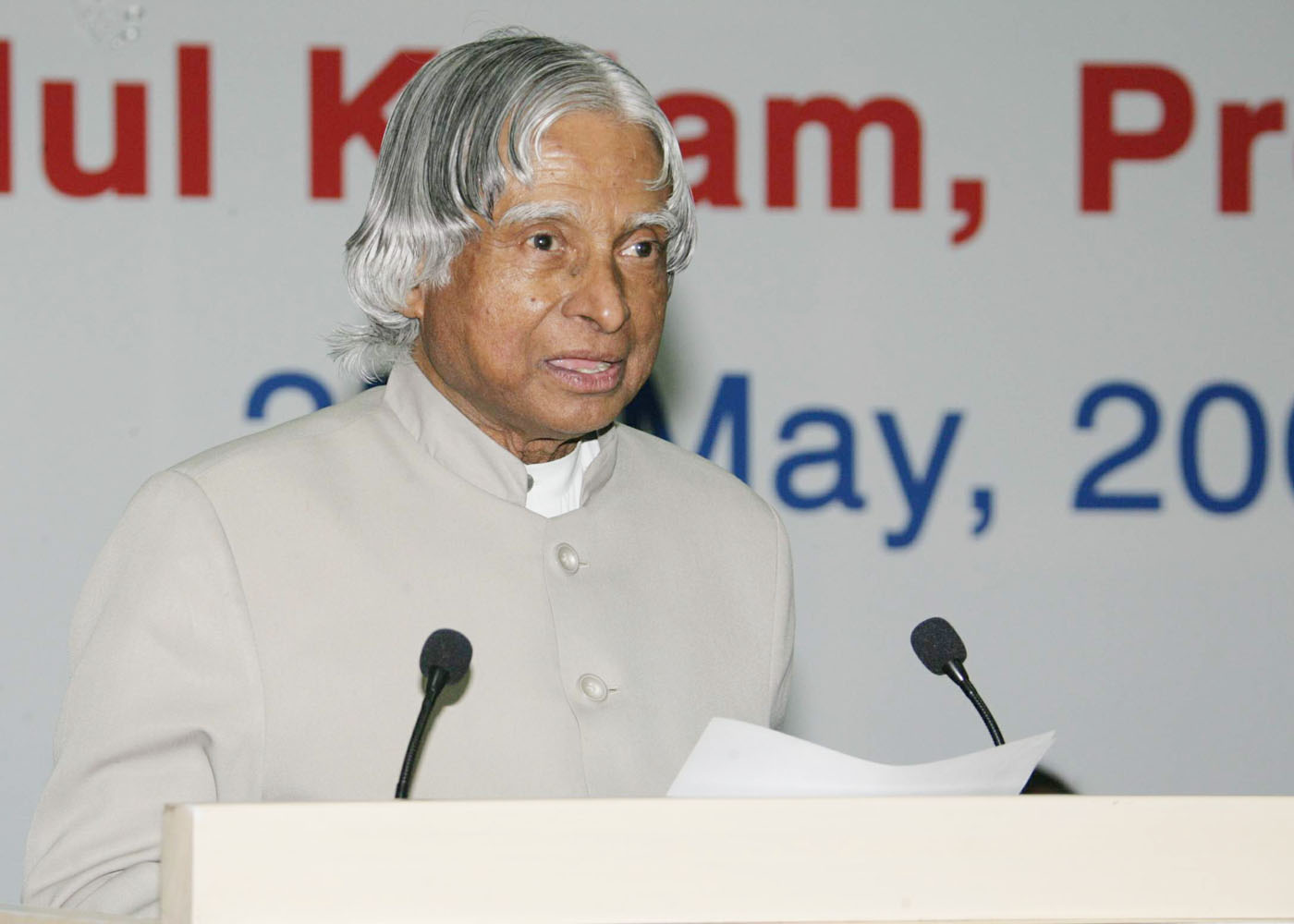
Improvement in Combustion Efficiency: Maruti researchers are continuously working on increasing the specific power output and reducing the fuel consumption and emissions. I am happy that all the vehicles produced in Maruti use electronic multipoint fuel injection systems and the newly designed KB engine is addressing the problem of efficiency through change of engine material to reduce heat wastage, reducing the weight of component to reduce the mechanical load and friction reduction. Automobile experts suggest that for getting better control and precision over combustion and emission, we have to work on direct injection of gasoline for better exhaust characteristics. Gasoline direct injection permits combustion of ultra-lean fuel air mixtures under diverse operating conditions and hence can deliver higher performance with lower fuel consumption and lower emission. I am sure that Maruti R & D engineers will be very keen to work in this area for getting higher efficiency and lower pollution levels from these vehicles. Your work may also be useful for other automobile manufacturers in the country and abroad.
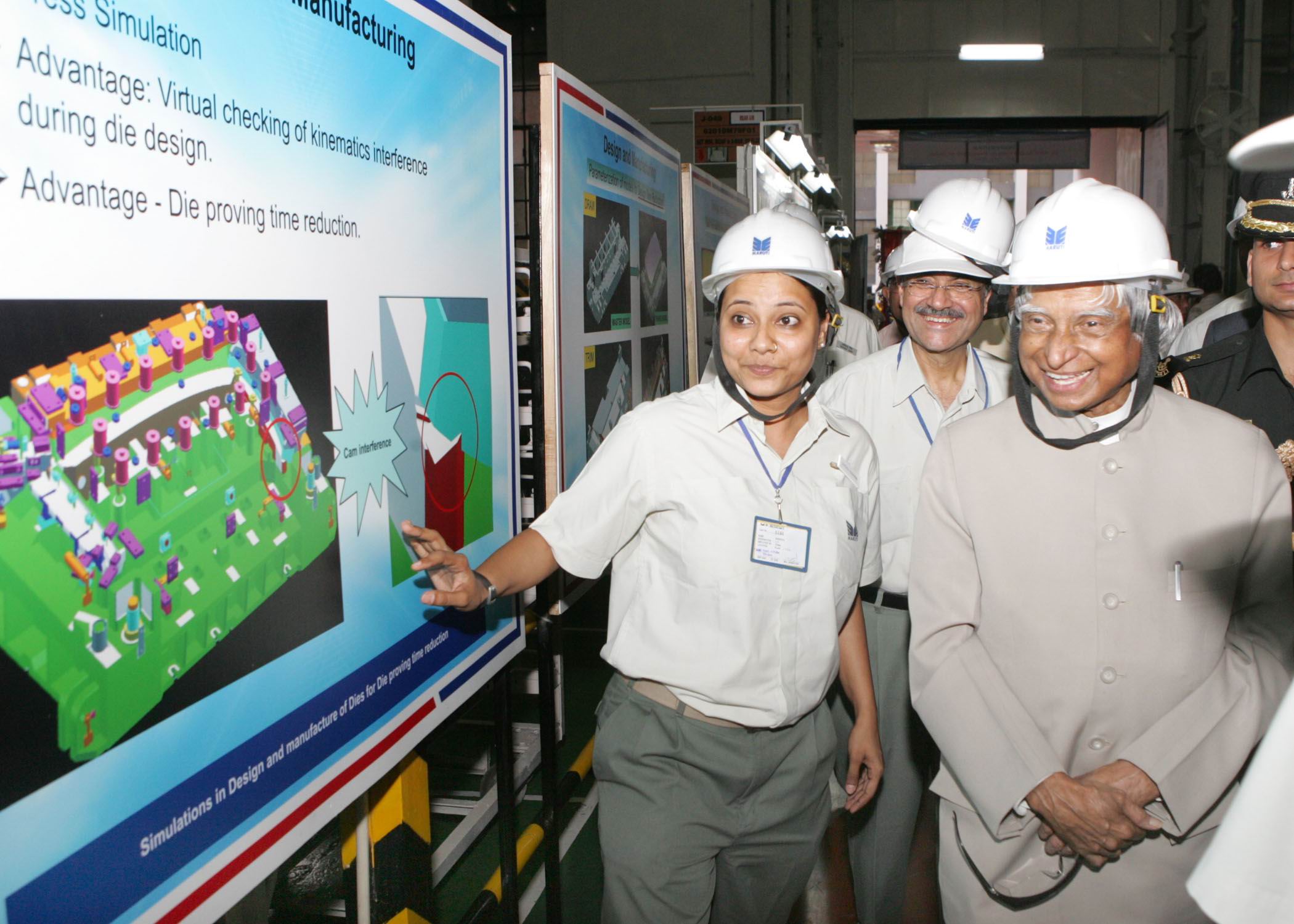
Alternate Fuels: While it is important, to continuously improve the efficiency of internal combustion engines, scientists have to concentrate on development of alternate fuels and renewable energy sources. The future generation cars and trucks have to use bio-diesel, ethanol and hydrogen. Bio-fuels are renewable and can be produced in short notice as against fossil fuels which have been produced over millions of years. Bio-fuels are carbon neutral, but they have shown slight increase in NOx emissions. Engineers and scientists have to address this issue and find a solution to this problem. Hydrogen is considered to be the fuel for the future. It is totally an environment friendly fuel and renewable, thus removing dependence on petroleum resources.
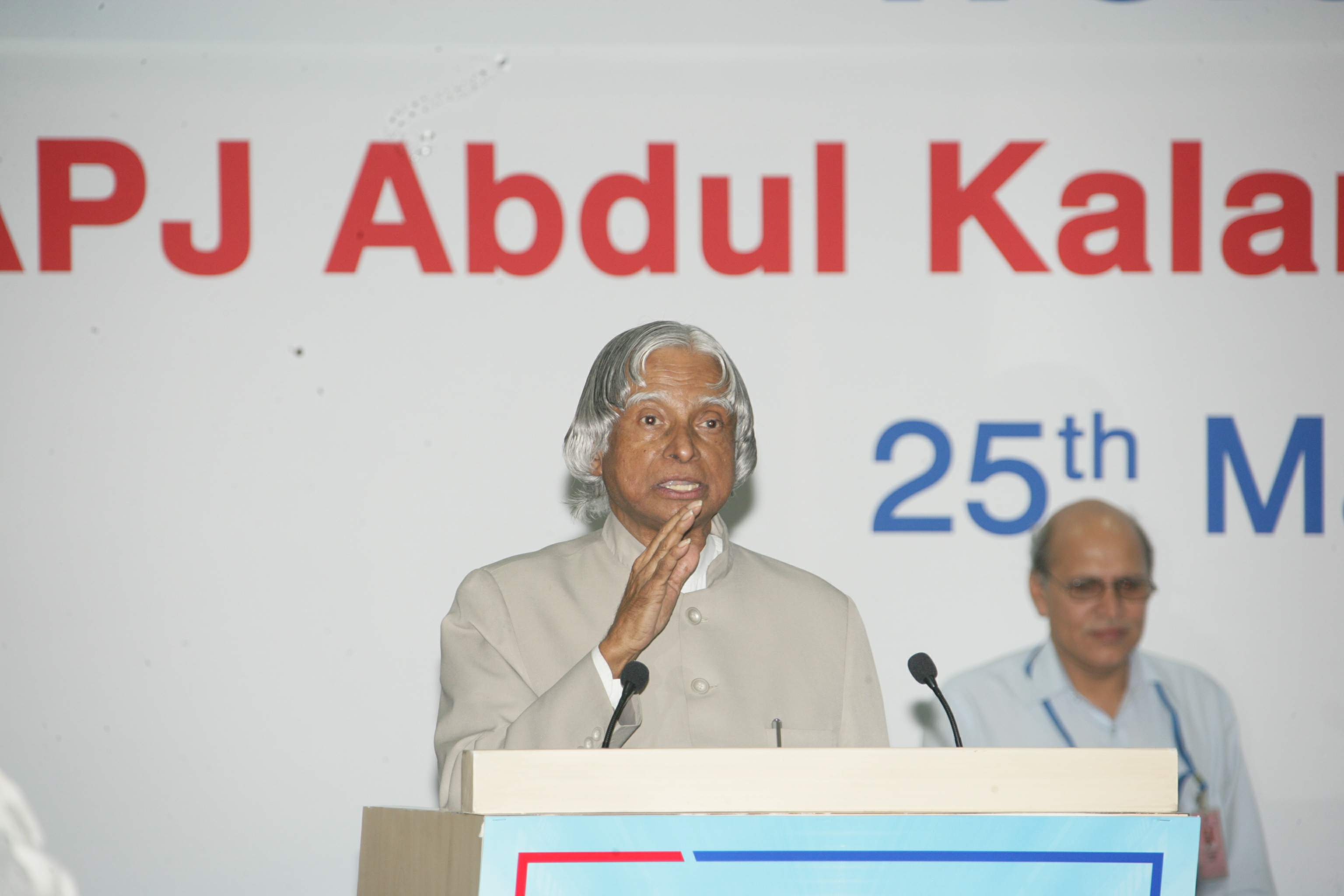
Hydrogen powered fuel cells: Hydrogen powered vehicles are almost zero emission vehicles. We have to progressively move into fuel cell vehicles within a few decades.
Iceland Experience: During my visit to Iceland, I had a unique experience, which I would like to share with you. Friends, the President of Iceland and myself with our teams were traveling in a hydrogen fuelled bus. The bus also took us to a Hydrogen Fuel station and we filled up Hydrogen gas in the fuel tank and we continued our journey and discussions. I am aware that, hydrogen operated motorcycles, three wheelers and small generators have been developed in the country. In addition, Polymer Electrolyte Membrane Fuel Cell (PEMFC) and Phosphoric Acid Fuel Cell (PAFC) technologies and fuel cell ? battery hybrid van have been developed. Hydrogen production from distillery waste and other renewable methods have also been developed. Hydrogen storage in metal hydrides has also been demonstrated. At present, research is in progress to further improve the performance and technology of these vehicles and generators. Particularly the Fuel cell powered automobiles will become a reality in the world. In India, an electric car company in collaboration with DRDO have developed a hybrid vehicle which can be run with a fuel cell and the cost per kilometer will be just 40 paise in addition to the pollution free operation of the Car. Also, we should know that ISRO launch vehicles use liquid oxygen and hydrogen fuel. Production of liquid hydrogen is being done in Mahendragiri Space Centre. I would urge the Maruti research community to work in partnership with Indian and international R&D institutions in the areas such as high pressure storage of hydrogen, liquid storage, storage in nano-structure, development of safety codes and standards and development of dedicated engine for hydrogen fuel.
Automotive scientists and engineers have to work on the use of hydrogen in IC engine which will give lower tail pipe emissions and better fuel economy. The constraint would be the availability of hydrogen which has to be produced using different processes such as: electrolysis of water, thermal cracking of CH4, ethanol reforming and coal gasification. This is the challenge for researchers to determine a commercially viable option and make it technically feasible. Recently, I found the research finding how hydrogen can be generated by passing water through Aluminium in the presence of gallium. The interesting feature here is we do not have to store hydrogen. It will be produced when it required and will be directly used. I am sure Maruti researchers will definitely be interested in such innovative solutions. Another futuristic area will be automobiles using solar cells.
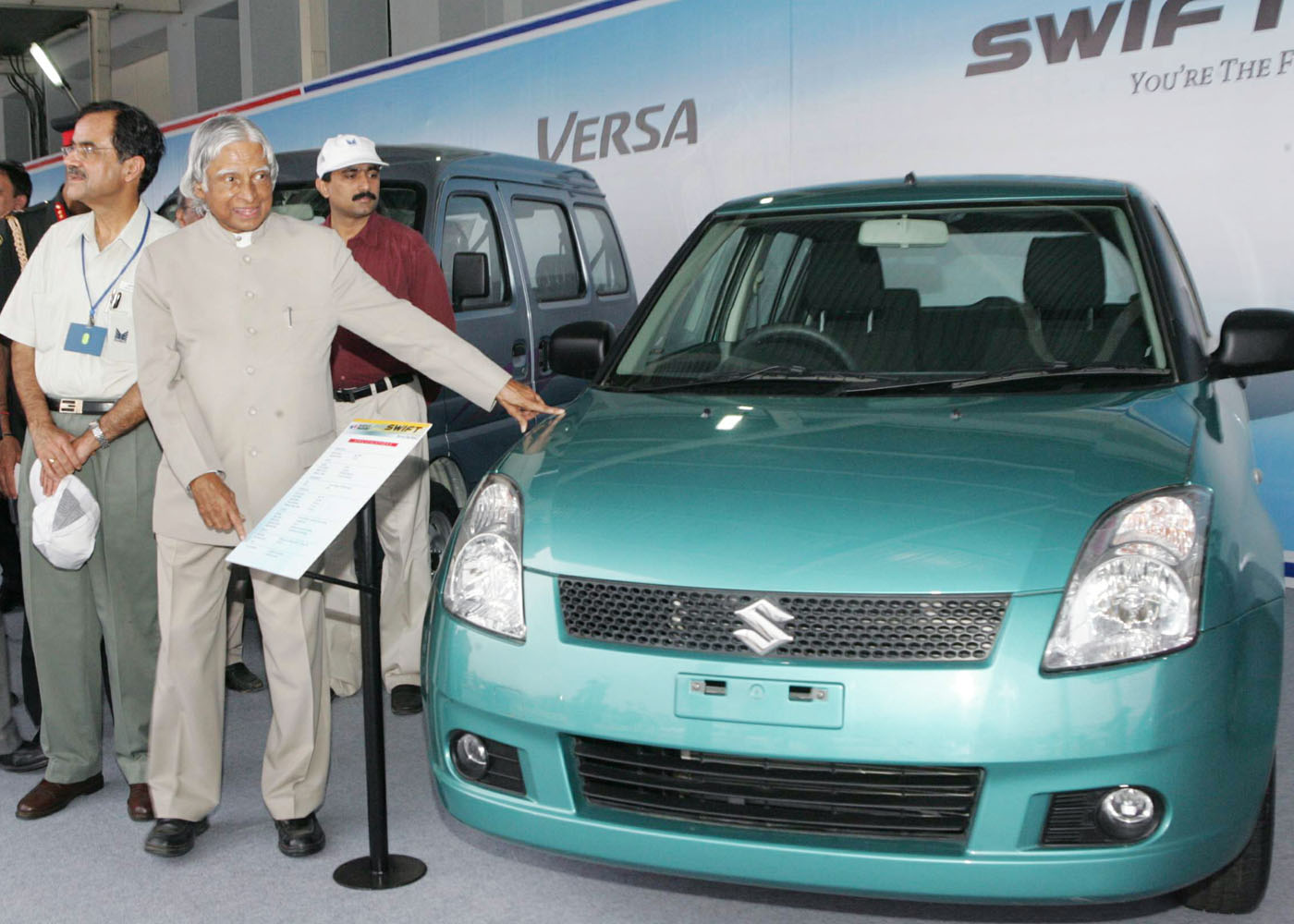

CNT based solar cells for higher efficiency
Another area which the future automobile may find will be solar energy based engines. Particularly, the energy produced through solar energy has to increase substantially. The low efficiency of conventional photo voltaic cells has restricted the use of solar cells for large application for power generation. Research has shown that the Gallium Arsenide (GaAs) based PV cell with multi junction device could give maximum efficiency of only 30%. Hence it is essential to launch a research mission on Carbon Nano Tube (CNT) based PV cell which has got higher level of promise in efficiency.
The CNTs provide better electron ballistic transport property along its axis with high current density capacity on the surface of the solar cell without much loss. Higher electrical conductivity and mechanical strength of CNT could improve the quantum efficiency to the order of 35%. But, this is not sufficient. Recent research has shown that the alignment of the CNT with the polymer composites substrate is the key issue and this aligned CNT based PV cells would give very high efficiency in photovoltaic conversion. The polymer composites increase contact area for better charge transfer and energy conversion. In this process, the researchers could achieve the efficiency of about 50% at the laboratory scale. Our scientists have to take up this challenge and come up with the development of a CNT based PV cell with an efficiency of at least 50% within the next three years so that it can go into the commercial production within five years. In addition, they can also take up the development of organic solar cells, dye-sensitized solar cells and third generation solar cells. The automobile specialists should work with these energy experts to get the solar cells with 50% efficiency which can be effectively used in solar power driven vehicles.
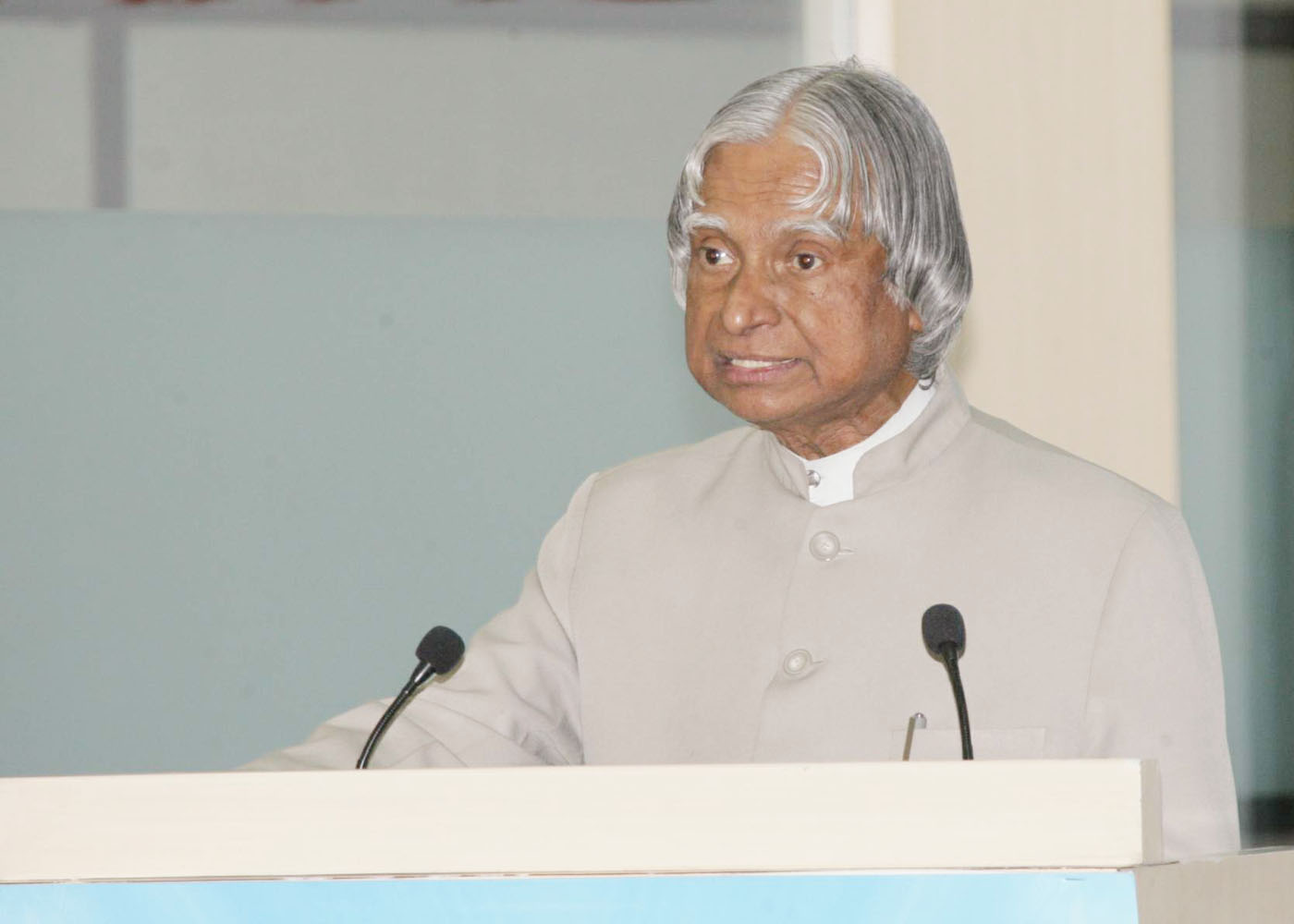
Alternative Power Plants: Substantial research is required in battery technology to provide a reliable, low-weight, high density and cost effective battery to the large Indian rural population. Simultaneously, there is a need to work on hybrid electric vehicle for containing the growing environmental emission in big cities. Challenge for researchers will be in the development of drives, control electronics, transmission and low weight high capacity batteries. Now, I would like present some thoughts on safety systems.
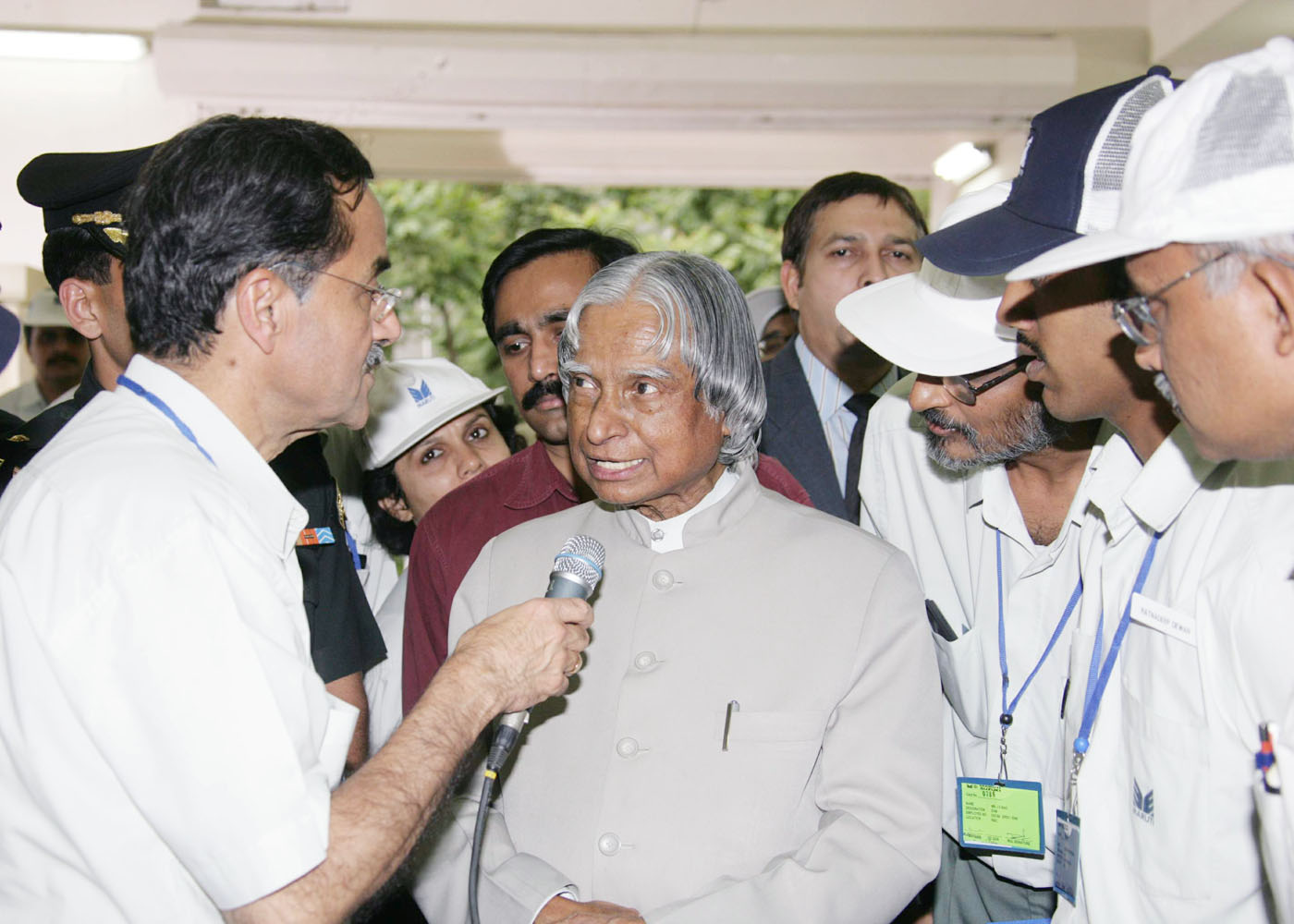

Safety systems
While Indian Automobile Industry is growing at an impressive rate of 17%, there is a growing concern regarding the increase in number of accidents taking place on Indian roads. As per a survey, India loses around Rs.25,000 Crores and 50,000 lives per year due to accidents.
Four-wheeler safety: What we need is vehicles should be protected against various impacts like front, side, rear, offset, car-to-car etc. Indian scientists have to work on designing a cost effective strong cage to protect the occupants with minimal use of materials. Development of electronic control system and use of energy absorbing materials for structures will be critical in this area. For preventing accidents in the night, we need research on adaptive front lighting, bent head light system and provision of indirect vision devices like cameras in area where driver cannot see. Research is also required to design electronic stability control for safe driving under adverse climatic conditions like during snow, rain and fog. I understand that electronic brake force distribution system is used together with anti-lock braking system as a smart anti-lock braking mechanism in high end cars. It is essential to develop low cost affordable smart anti-lock braking system for fitment in cars in hilly, snow bound and heavy rain regions. While working on the safety systems the researches will have to keep the Indian anthropometric data in mind so that there is no adaptation problem. Social scientists have to create such data of the Indian population for integration with automotive design.
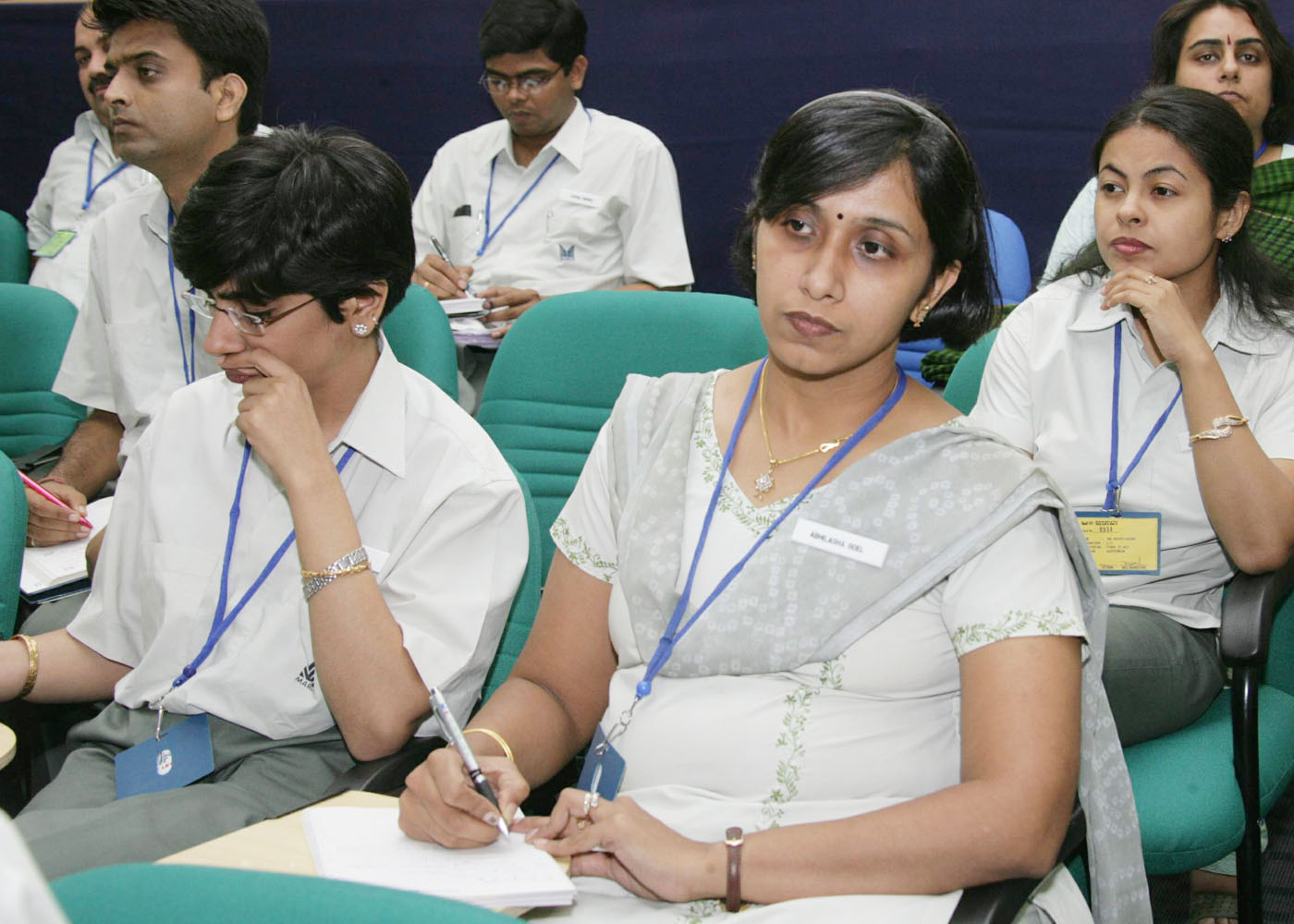
Advanced materials: Research in advanced materials and manufacturing will be an important area for Indian automobile industry. The materials and the processes used have to aim at lower weight, lower investment, higher life, low maintenance and lower life cycle cost. Presently, Indian designs are mostly using metals for the chassis and the body. Researchers have to work on carbon-fiber reinforced composites which will have better impact characteristics and also eventually it should become cost effective for the consumers when produces in large quantities. Another important area of research and innovation is to develop automotive components using locally available materials such as jute and coconut fibre. India has substantial experience in designing systems using carbon composite structure acquired through the development of LCA (Light Combat Aircraft) programme, which has 50% by weight and 90% by surface area of carbon composite structure. Material scientists of Maruti may like to interact with the LCA team for designing future automobile systems using carbon composites which may not only reduce the weight of the vehicle but also will be safe against fire hazards and crash collision condition.
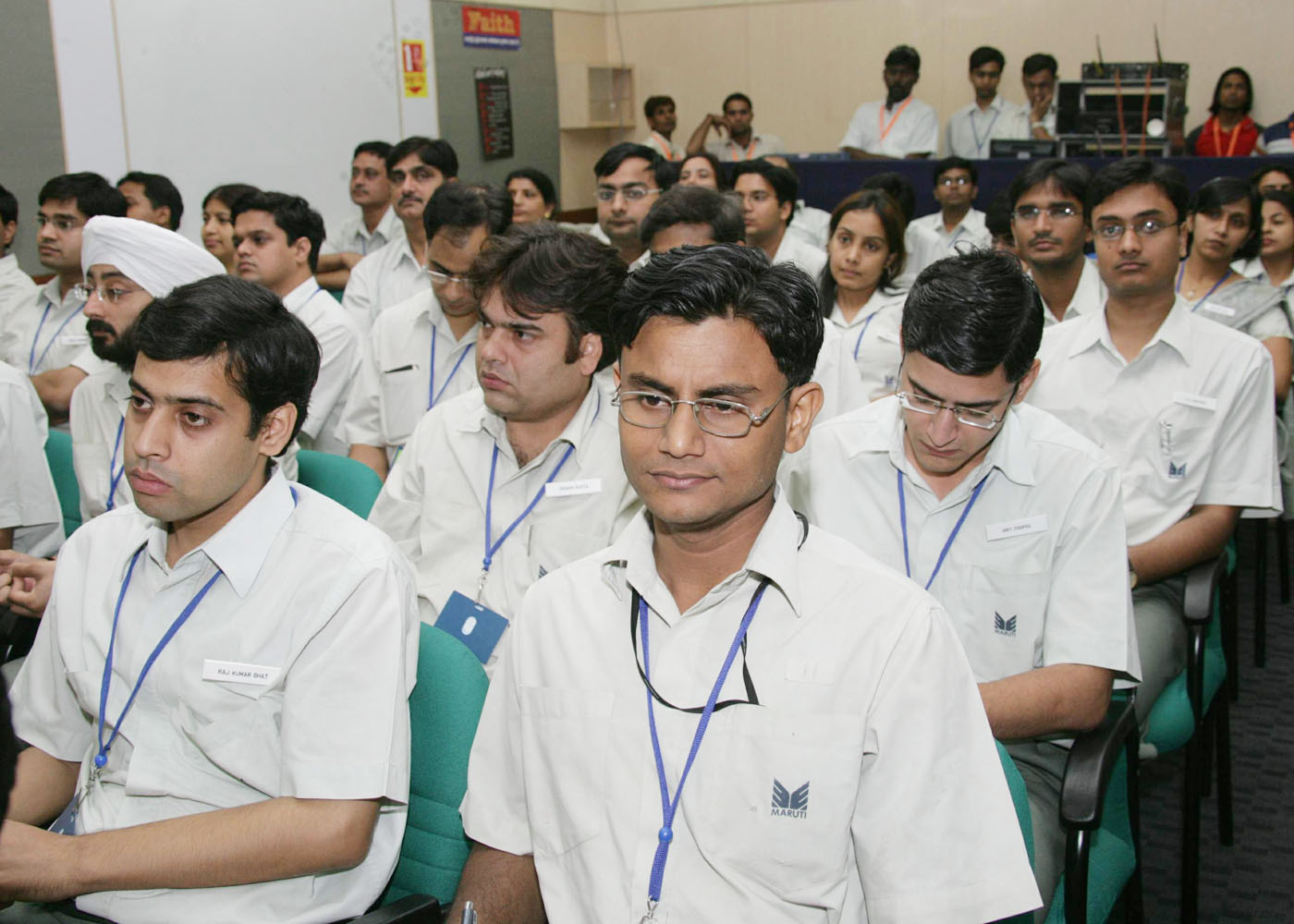

Possible Vision
Time has come to launch new models of Maruti designed, Maruti developed and Maruti produced cars competitively for national and international market periodically.
Since Maruti, is a leading manufacturer of small car segment, it is essential for Maruti to study the international requirement in this segment and work for enhancing its international market share progressively during the next decade.
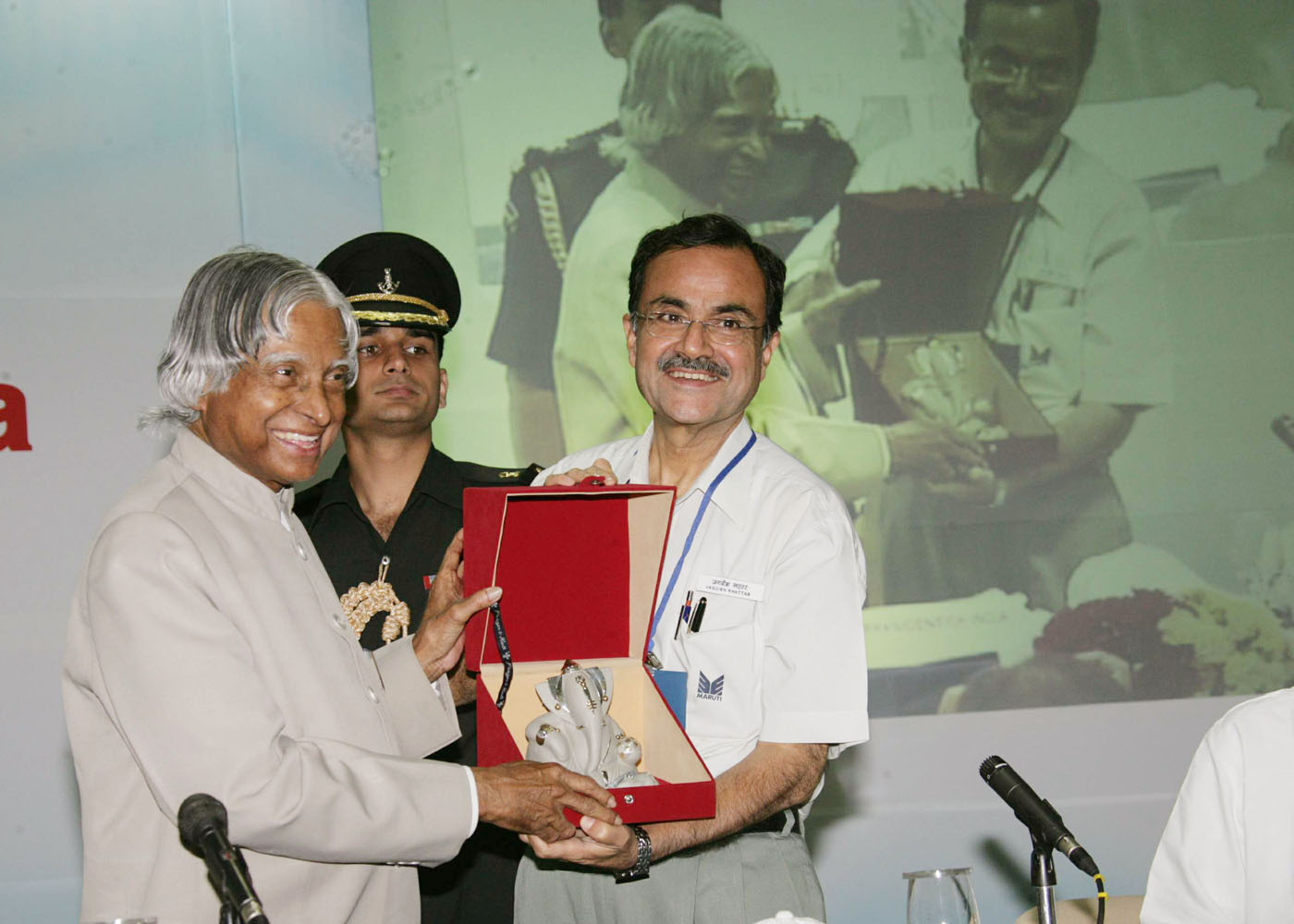

Conclusion: Economic development and prosperity
I would like to conclude my talk with the growth of the economic development and prosperity.
- Nations Economic development is powered by competitiveness.
- The competitiveness is powered by knowledge power.
- The knowledge power is powered by Technology and innovation.
- The Technology and innovation is powered by resource investment.
- The Resource investment is powered by revenue and return on Investment.
- The Revenue is powered by Volume and repeat sales through customer loyalty.
- The customer loyalty is powered by Quality and value of products.
- Quality and value of products is powered by Employee Productivity and innovation.
- The Employee Productivity is powered by Employee Loyalty, employee satisfaction and working environment.
- The Working Environment is powered by management stewardship.
- Management stewardship is powered by Creative leadership.
For success in all missions we need creative leaders. Creative leadership means exercising the vision to change the traditional role from the commander to the coach, manager to mentor, from director to delegator and from one who demands respect to one who facilitates self-respect. For a growing automobile industry, thrust will be on the growth of number of creative leaders for all the innovative organizations.
My best wishes to all the members of Maruti community for success in their mission of making Maruti the world leader in compact car market.
May God bless you!
Dr. A. P. J. Abdul Kalam
<<Back
|
|